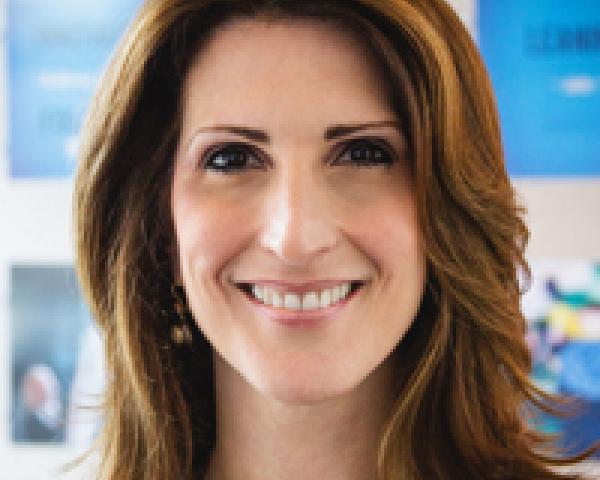Even in complicated insurance cases, judges may not decide the technical issues. So, here are tips on picking and educating jurors.
For most potential jurors, questions of insurance coverage do not usually arise in common conversation. Seldom cut and dried, usually subject to numerous definitions and intricacies, coverage issues can be boring and puzzling for even an experienced adjuster. Asking a lay person to try to classify an “occurrence” as defined by a policy, or whether a third party is covered as an additional insured, may prompt, at best, glazed-over eyes or, even worse, a negative commentary about insurance companies. While it may be best in some situations for a judge to determine the issue of insurance coverage, this is not always possible. Sometimes, coverage questions arise in litigation, and those interpreting policy language and determining the outcome are jurors. If jurors are deciding the issues, certain challenges then arise, such as how to clarify policy language, present a clear and concise argument and overcome negative preconceptions about the insurance industry.
Can the Judge Decide Coverage Issues?
In Louisiana, general rules regarding issues that are triable by a jury are set forth in Louisiana Code of Civil Procedure articles 1731 - 1736. These establish the general rule that a demand for a trial by jury will result in a trial by jury of all issues. However, exceptions to the general rule exist when: (a) the parties stipulate that the jury trial shall be as to certain issues only; (b) a party in his demand specifies the issues to be tried by a jury; or (c) the right to trial by jury as to certain issues does not exist. Where a jury trial has been demanded by one or both parties, the case must be tried by a jury unless both parties consent to trial without a jury or the trial court finds that a right to a trial by jury does not exist.
More particularly, La. C.C. P. art. 1562(D) specifically codified the general principle found in La. C.C. P. art. 1736 requiring a stipulation between or the consent of the parties before the trial judge can order that insurance coverage issues be tried separately, with the “court alone” deciding the issue of insurance coverage.
La. C.C.P. art. 1562(D) states:
"If it would simplify the proceedings or would permit a more orderly disposition of the case or otherwise would be in the interest of justice, at any time prior to trial on the merits, the court may order, with the consent of all parties, a separate trial on the issue of insurance coverage, unless a factual dispute that is material to the insurance coverage issue duplicates an issue relative to liability or damages. The issue of insurance coverage shall be decided by the court alone, whether or not there is to be a jury trial on the issue of liability or damages."
The leading case on the subject is Citgo Petroleum Corp. v. Yeargin, Inc., 95-1574 (La. App. 3 Cir. 7/3/96), 678 So.2d 936, writ granted, remanded, 96-2000 (La. 11/15/96), 682 So.2d 746 and 96-2007 (La. 11/15/96), 682 So.2d 747. There, the court stated that La. C.C.P. art 1562(D) provided that, if principals of judicial efficiency or justice would be served then the court may order a separate trial on the issue of insurance coverage. However, the trial judge’s discretion is not unfettered. The judge’s ability to take the issue away from the jury is severely restricted because, under the article, all of the following conditions must exist: (1) it would simplify the proceedings, permit a more orderly disposition of the case, or be in the interest of justice; (2) the consent of all parties; (3) the non-existence of a factual dispute material to the coverage issue that duplicates an issue relative to liability or damages; and (4) the order must be rendered before trial on the merits.
Therefore, the requirements set forth in the article effectively leave the judge with no discretion, as it requires the consent of all parties. The court further noted that, while the issue of insurance coverage under an insurance policy is a narrow issue of the law between the alleged insured and the insurer, a jury is not prohibited, by statute or otherwise, from deciding this issue. Further, there is no exception to the right to trial by jury for issues that the trial judge may think are too technical or too complex for the jury to understand. Even if the trial judge believes that he is more capable than the jury of deciding the issue of coverage, he cannot take this issue away from the jury once the issue is included within the scope of issues for which a jury trial was requested, unless the conditions of La. C.C.P. art. 1562(D) are met.
As such, if a trial by jury has been requested, but an insurer is presenting technical questions of coverage and believes that a judge would be best suited to decide the coverage issue, a stipulation or the consent of all parties would be necessary before the judge could take the coverage issue away from the jury. Unfortunately, often the consent of all parties to separately try the coverage issue cannot be obtained, and the insurer is left with a jury to decide intricate and potentially costly coverage issues.
Selecting the Best Jury for Your Coverage Case
If coverage issues must be decided by a jury, the persons who make up that jury can make a difference in the outcome of the case. Questioning prospective jurors in voir dire about their current insurance policies and other contracts can provide some insight into how they view insurance companies and the potential for coverage. People often believe that they are “fully covered” under their insurance policies, and that insurers are large, prosperous companies that should be able to “help out” individuals. However, further questioning can reveal that potential jurors do understand that there are limitations as to what is covered under certain policies and what has been negotiated.
Questioning a potential juror about a policy he may currently have in place, whether that policy has a limit and if he understands that the insurance company would not be required to pay more than that limit, can show that the potential juror does understand some limitations to coverage. Additional questions may involve who the current policies provide coverage to and the limitations on that coverage. Even simple, and almost obvious, questions can help illustrate a potential juror’s understanding of coverage limitations. For example, discussing how an automobile policy might provide coverage for certain damage to an owned vehicle but would not cover general maintenance, oil changes or a monthly car payment can help provide insight into whether an individual may be able to understand the issues and be a constructive juror.
Additionally, general questions regarding the potential jurors’ opinion of insurance companies in general, personal claims experiences or inferences regarding insurers that the potential juror has taken from the media can provide insight into whether the potential juror might be favorable or undesirable from the insurer’s standpoint.
Presentation at Trial – Concise and Comprehensible
After a jury has been selected, helping jurors understand and follow the language and logic of the coverage argument is vital. The following tips may help simplify the coverage case and overcome obstacles when faced with presenting coverage issues to a jury.
1. Walk Jurors Through the Basics
Although often complex, insurance policies are simply contracts. They define a relationship between parties and outline who will do what, when and under what circumstances. Presenting the insurance policy as a simple contract, by identifying the promise between the parties and what each may receive in exchange for their promise, may help jurors be less apprehensive when approaching coverage issues.
A good place to start is with the basics of the policy and how it is structured. Discussing the declarations, insuring agreement, exclusions, definitions, conditions and endorsements allows jurors to get comfortable with the policy. After the policy and its purpose are explained, the specific provisions at issue can be addressed. An effective way to do this is by using demonstrative evidence, such as blowups of certain pages or Power Point presentations illustrating specific language and what it means. Presenting the policy through large exhibits helps break down the technicality for jurors and show that it is a logical and consistent contract.
Further, preparing an exhibit naming and listing the experience of all of the individuals who are involved in creating the policy, the claim investigation, adjustment and the coverage decision shows that time and thought of real individuals went into creating a well-organized document and making a well-thought-out coverage decision.
2. Humanize the Issues
Jurors often bring their own experiences to the courtroom and, sometimes, a bad impression of insurance companies. Further, oftentimes coverage disputes are coupled with bad faith claims, exacerbating the notion that insurance companies are malicious. To overcome these perceived notions and prejudices, it is key to humanize the insurer’s operations and show the jurors that real people have drafted the policies and handled the claims. Showing that the insurer is not just a large, faceless corporation, but individuals making decisions and doing their jobs, will help negate the insured’s presented image of an uncaring, profit-seeking business entity. While testimony from a vice president may be impressive, the agent who issued the policy or the adjuster who handled the claim may help put a more relatable face to the company.
Additionally, many insurers have adopted vision statements outlining a code of ethics or a commitment to the community. Using this at trial, and showing how the company is committed to its values or involved in the community, helps dispel negative ideas of an uncaring corporation.
Lastly, insurers should be careful about attacking the insured’s credibility or positions. While it may be necessary, the way this is presented to the jury can have a big impact and can erroneously further the negative ideas about the insurance company.
3. Show All Negotiations
Jurors will generally understand the concept of “you get what you pay for.” They know that if they contracted with their cable company and pay for only the basic channels, they do not get premium channels, such as HBO. It follows that jurors should understand that if underwriting documents or other evidence show what was discussed and understood between the parties, and this is reflected in the contract, this should be what governs. If evidence of negotiations is available, this should be presented to the jury. This concept may be particularly helpful in litigating commercial policies, where there is usually more negotiation, and in showing the application of policy exclusions.
4. Keep It Simple
As a general rule, the simpler the better. It is important to keep the insurance policy language from sounding too technical. Avoid overuse of legal terms and phrases, as this will only confuse jurors and may cause them to fall back on the generally accepted legal principle that “any ambiguity must be construed against the insurer.” A straightforward presentation, relying on only one or two strong coverage arguments, should be used. Presenting every argument possible is not always the best strategy, as this could bog down the jury and cause them to lose focus. When one or two key arguments are made, the case is tight and allows jurors to concentrate on the big picture, rather than trying to follow several moving parts.
Another tactic that may help bring the issues to a comfortable level is to compare the policy to other contracts jurors may have entered into. Outlining the limits and duties imposed by contracts that jurors may be more familiar with, such as a purchase agreement for a car, or a lease agreement for an apartment, may also help jurors realize that there are also limitations and duties imposed by insurance contracts, just like the contracts with which they are more familiar.
Additionally, working backward from the result being sought provides a road map for a streamlined argument and helps create a unifying theme throughout the litigation. Starting from the verdict form or jury instructions helps to keep concentration on the elements that need to be established or explained.
5. Apply Basic Jury Concepts
Basic concepts of persuasion, which apply to all jury litigation, can also be used effectively in a coverage case. Fairness must be stressed and run as a theme throughout the presentation of the coverage case. Jurors want to be fair and will try their best to do so. Additionally, any obvious weaknesses in the case should be addressed. Holes in the case, if not admitted to or explained, will create doubt.
Presenting a coverage case to a jury is sometimes unavoidable, but need not be too difficult or incomprehensible for jurors. Carefully questioning and selecting potential jurors, along with presenting a simple yet logical argument, while humanizing the insurance company, can help achieve a successful presentation of the case in the courtroom and, with that, a successful result.














